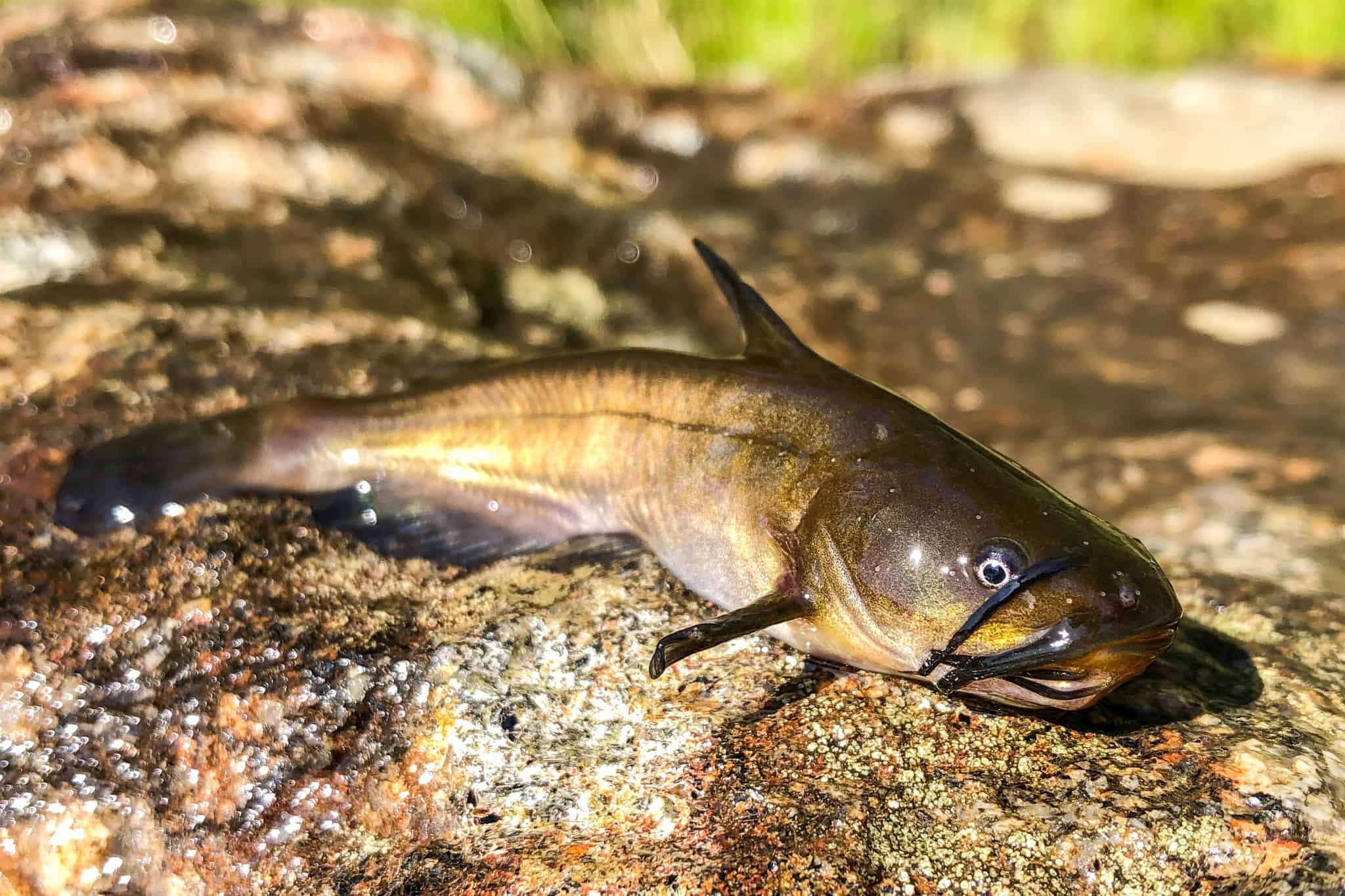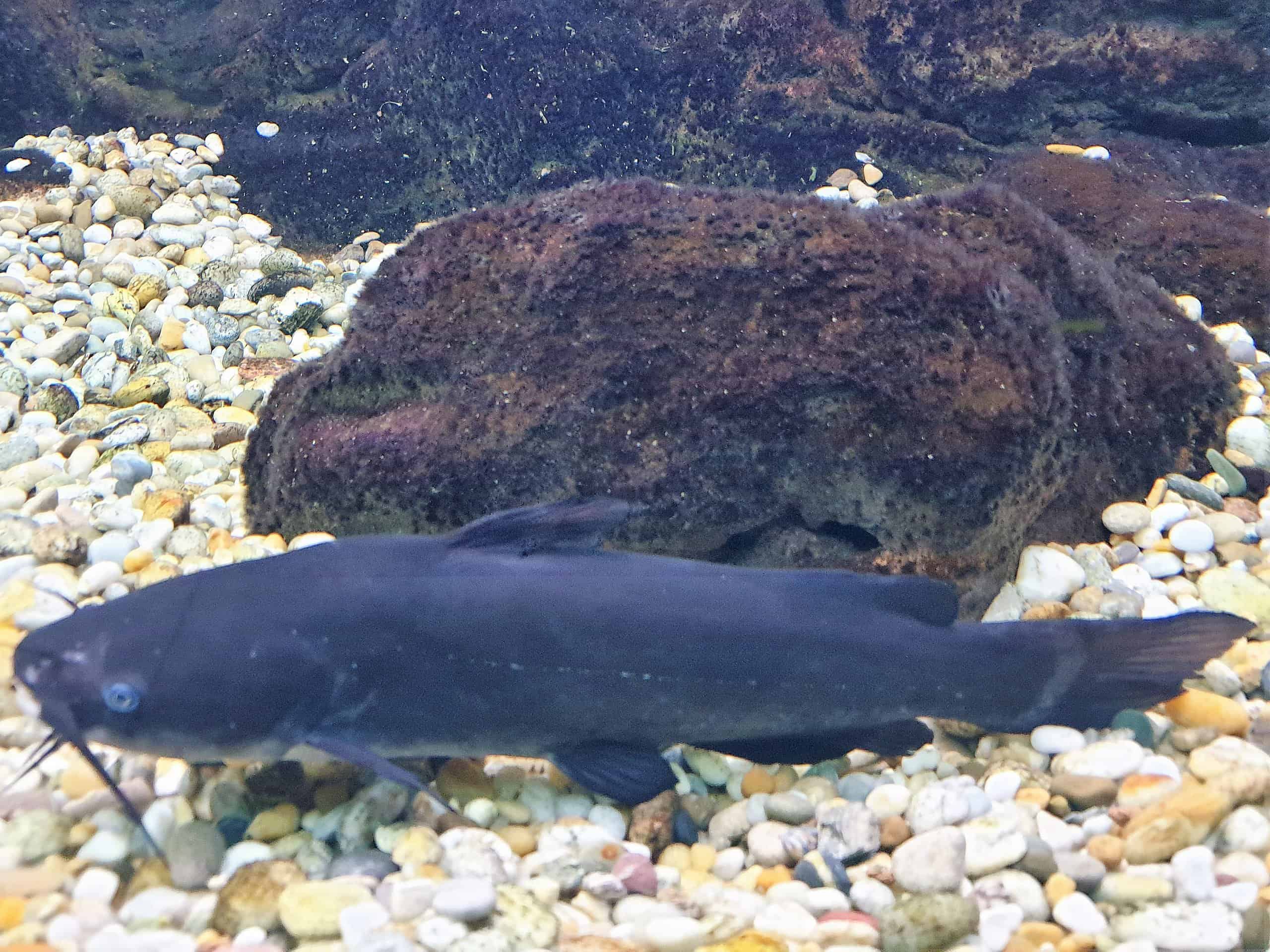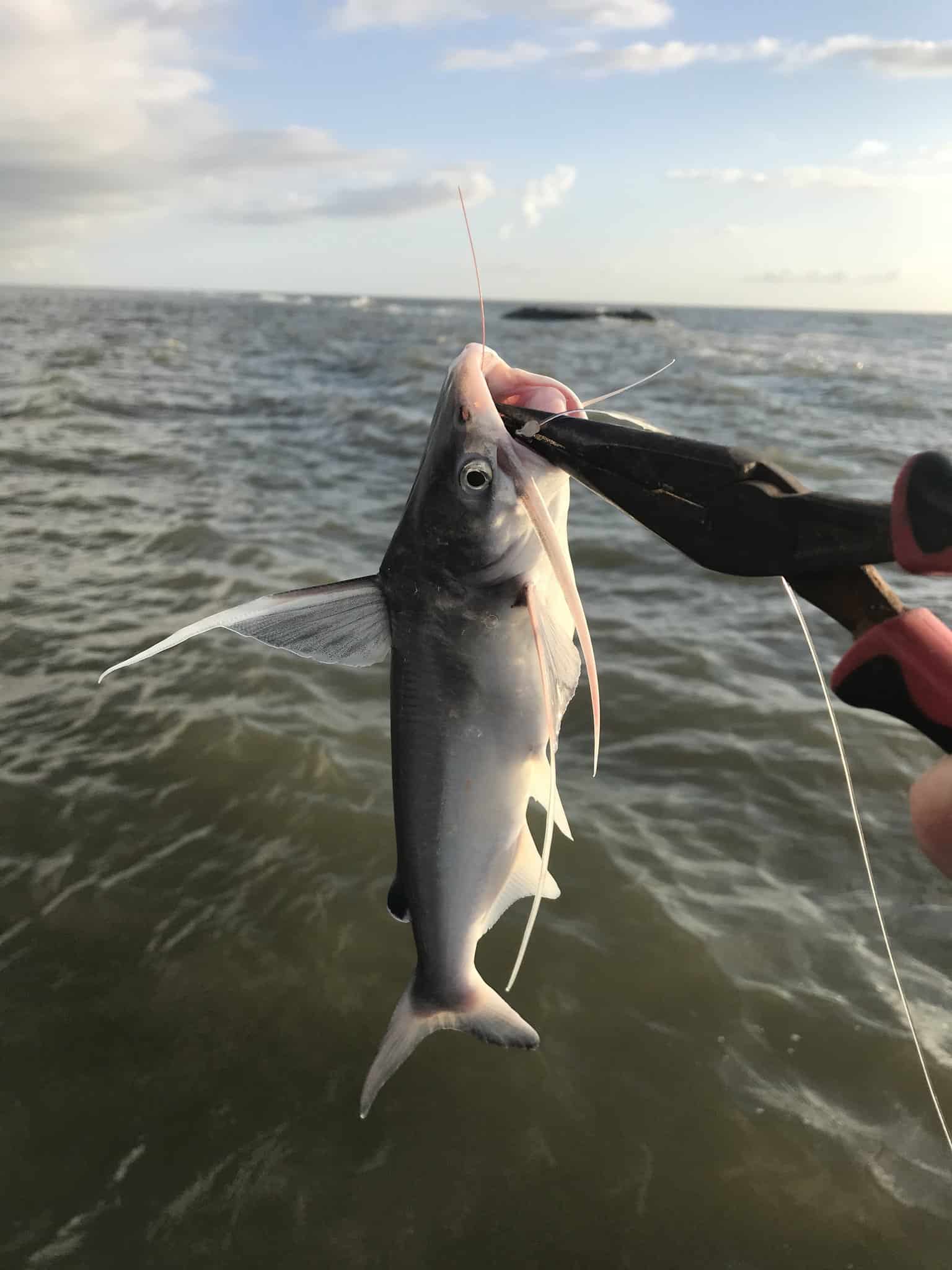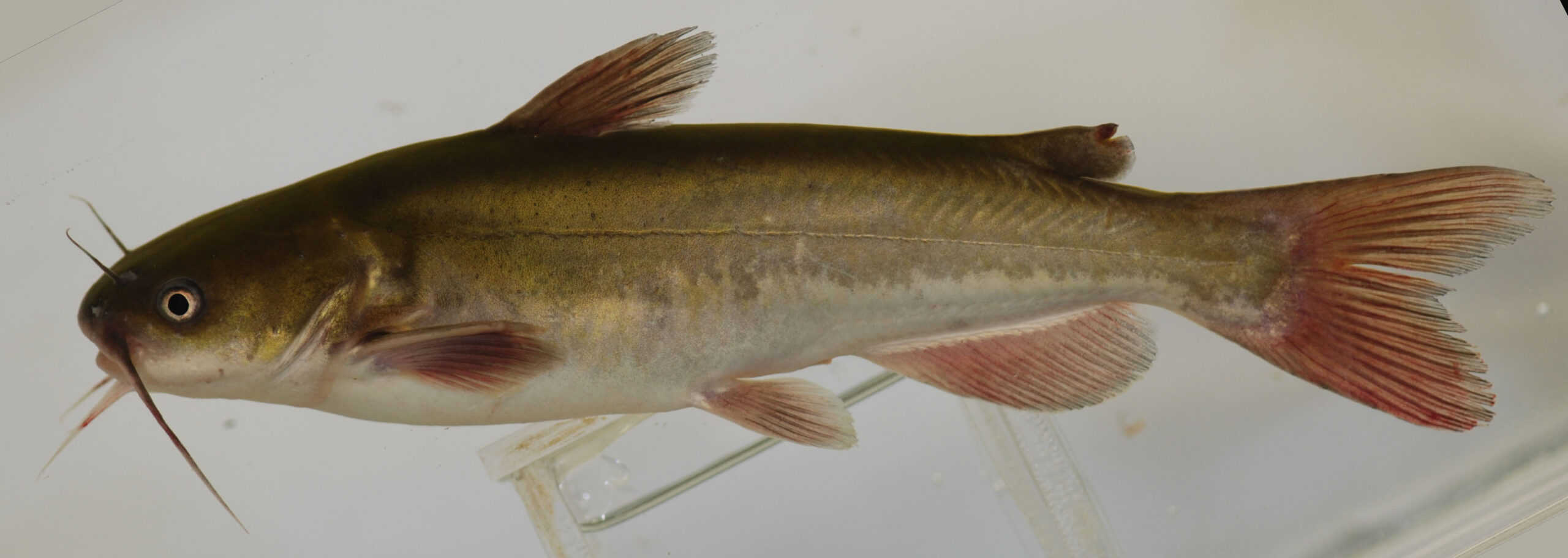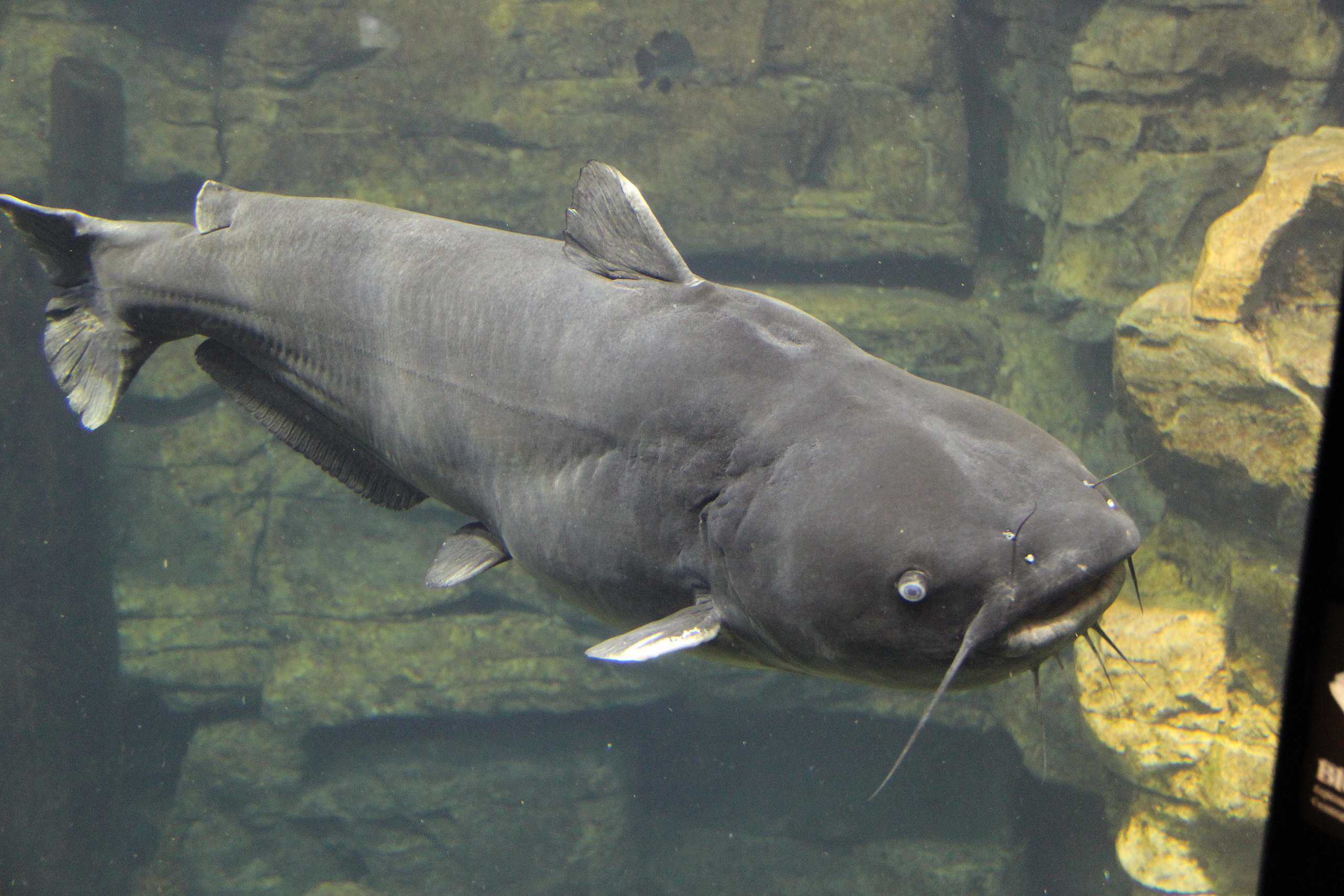

Catfish are big business in the United States. According to the last USDA Aquaculture Census, catfish are the top fish raised and sold on U.S. fish farms. There are 531 catfish farms in the U.S., with Mississippi housing more of these farms than any other state. According to the report, catfish accounted for $366.8 million in 2018 (the most recent available USDA census) and accounted for 51 percent of all food fish sales. However, along with farm-raised catfish, wild American waters are teeming with different types of catfish. Here’s a look at the biggest catfish ever caught in the U.S., broken down by species. (If bass fishing is more your speed, here’s a look at the 10 largest bass ever caught in the U.S.)
Sport fishing’s governing body, the International Game Fish Association (IGFA), verifies and documents world-record fish catches. All of the information for each record-setting catfish included below was sourced exclusively from the IGFA website. Each fish on this list is both a U.S. and a world record.
Catfish Traits
There are over 3,000 types of catfish on the planet. As you would expect, there is a wide variety of appearances, environments, and behaviors represented in these thousands of different fish, but there are a few similarities shared by all catfish. All catfish are scaleless. Most are smooth-skinned, while some have scutes (bony plates). Scutes are not the same as scales, though.
The most identifiable feature of a catfish is its barbels. These whisker-like organs are what gave the catfish its name since they appear similar to a cat’s whiskers. All catfish have at least one pair of barbels, with many species featuring multiple pairs of barbels.
Only around 1% of the world’s catfish species are found in the United States, but some of them are favorites among the nation’s anglers. Catfish are a top-five game fish in the U.S., trailing only black bass, panfish, and trout.
Many catfish are nocturnal feeders, so avid anglers may see some of the best fishing action late at night or in the wee hours of the morning. Catfish typically make excellent table fare and some grow to massive sizes, making them targets for millions of American anglers each year. Here’s a look at the biggest catches ever recorded of 8 popular U.S. catfish species.
Yellow Bullhead

- World-Record Weight: 6 pounds, 6 ounces
- Angler: John R. Irwin
- Date: May 27, 2006
- Location: Drexel, Missouri
There are several bullhead catfish species native to the U.S., though some are rarely encountered by anglers. These catfish are known as bullheads, not because they are stubborn (bullheaded), but rather because two of their barbels point upward, giving the appearance of a bull’s horns. Bullheads have squared tails, unlike other catfish species such as channel or blue catfish.
The yellow bullhead (Ameiurus natalis) is native to the United States east of the Rocky Mountains. However, the fish has been introduced to areas west of its original range, such as Washington State. It is named for the yellow or yellow/white underside of its head and body. It can also be distinguished from brown and black bullheads by its distinctive white chin barbels.
This catfish can be found in a variety of habitats, including ponds, lakes, and rivers (especially the backwaters). It abounds in environments with a gravel, silt, or mud bottom. Yellow bullheads can thrive in the oxygen-poor environment of slow-moving or still water. Yellow, brown, and black bullheads are sometimes colloquially known as “mud cats.”
While some catfish, such as the flathead, prefer live prey, the yellow bullhead will scavenge for whatever it can find, living or dead. It uses the tastebuds on its barbels to find food. This makes them easy targets for anglers since yellow bullheads will eat nearly anything.
A mature yellow bullhead typically measures around 10-12 inches and weighs around one pound. However, since they have few natural predators in their low-oxygen environments, they can grow quite a bit larger in some circumstances.
Brown Bullhead
- World-Record Weight: 7 pounds, 6 ounces
- Angler: Glenn Collacuro
- Date: August 1, 2009
- Location: Mahopac Lake, New York
The brown bullhead (Ameiurus nebulosus) is native to roughly the eastern third of the United States, stretching north into southern Canada. Like the yellow bullhead, though, it has been introduced far beyond its original range. Brown bullheads are now found in West Coast states. It has even been introduced in Hawaii.
The brown bullhead is sometimes known as the mud pout, horned pout, or hornpout. This catfish is dark brown-green with an off-white or cream-colored belly. It features prominent brown or black spots and splotches (mottling) along the length of its body, distinguishing it from the yellow and black bullheads.
These catfish are often found in the same muddy, low-oxygen environments as the yellow bullhead. They also are not picky eaters, preying on insects, snails, fish, and decaying matter. Nightcrawlers, leeches, and even corn are popular baits for catching brown bullheads.
The typical adult brown bullhead measures 10-15 inches and weighs 1-2 pounds, but can grow far larger due to its relative lack of natural predators.
Black Bullhead
- World-Record Weight: 8 pounds, 2 ounces
- Angler: Frank Piazza
- Date: August 8, 2015
- Location: Massapequa Lake, New York
The black bullhead (Ameiurus melas) is native to the central United States. Like its relatives, it has also been introduced well outside that original range.
As its name suggests, the black bullhead is typically darker in color compared to the yellow and brown bullheads. The fish is rarely black, though, except for young spawning males. The black bullhead is typically dark green to yellowish-brown. It has black chin barbels, setting it apart from the yellow bullhead, and it is never mottled, which distinguishes it from the brown bullhead.
Like other bullheads, the black bullhead is often found in muddy, slow-moving water. It will also predate or scavenge virtually anything in its environment.
Black bullheads are typically the same size as brown bullheads, with an average size of up to two pounds.
Gafftopsail Catfish
- World-Record Weight: 10 pounds, 0 ounces
- Angler: Nicholas F. Grecco
- Date: February 10, 2007
- Location: Boca Raton, Florida
The gafftopsail catfish (Bagre marinus) is a marine catfish that is found from Panama to Cape Cod. In the U.S., it is most often caught in the Southeast and Gulf states.
Gafftopsail catfish are named for their dorsal fin that rises from high off their back, giving the appearance of a sail. These catfish are also known as gafftops, sail cats, and slime cats (due to the thick mucous that covers their bodies).
Sail cats can be caught in moderately deep ocean water, as well as estuarine waters. During the summer, they can even be found in freshwater rivers and streams.
Historically, these fish have been overlooked as “trash” fish that got in the way when anglers were targeting true game fish. That mindset is changing, though, as more and more fishermen and fisherwomen are purposefully fishing for gafftops.
Like many of their freshwater relatives, gafftopsail catfish can be caught with cut bait, blood bait, and other rather odiferous offerings. However, these fish will also chase artificial lures such as plugs, soft plastics, spinnerbaits, and even flies.
These marine catfish normally grow to around 2.5 pounds, but catches of 6-8 pounds are not uncommon, with those fish measuring up to two feet in length.
White Catfish (White Bullhead)
- World-Record Weight: 19 pounds, 5 ounces
- Angler: Russell D. Price
- Date: May 7, 2005
- Location: Oakdale, California
The white catfish or white bullhead (Ameiurus catus) is native to the eastern United States, from Florida to southeastern New York. It has been introduced to different bodies of water in the Midwest, and even as far west as Washington State and California.
This catfish normally has a dark gray (sometimes brownish) back. The color fades to a light gray on the sides of its body, and then to white on its belly. The white catfish is often confused with the channel catfish. The barbels at the corners of its mouth are shorter than those of a channel catfish. The white catfish also has a much broader head and lacks the black spots that are typical of a young channel catfish.
Like other bullheads, the white catfish is often found in muddy, low-oxygen environments found in the backwaters of streams and rivers. It can even tolerate brackish water. This catfish has also been introduced into many landlocked reservoirs and lakes where it has thrived.
A typical white catfish weighs between one and two pounds, but it has the potential to grow larger than other bullhead species. Catches of 8-10 pounds, while not overly common, do sometimes happen. However, some of these large white catfish may actually be misidentified channel catfish since the two species do look quite similar.
Channel Catfish
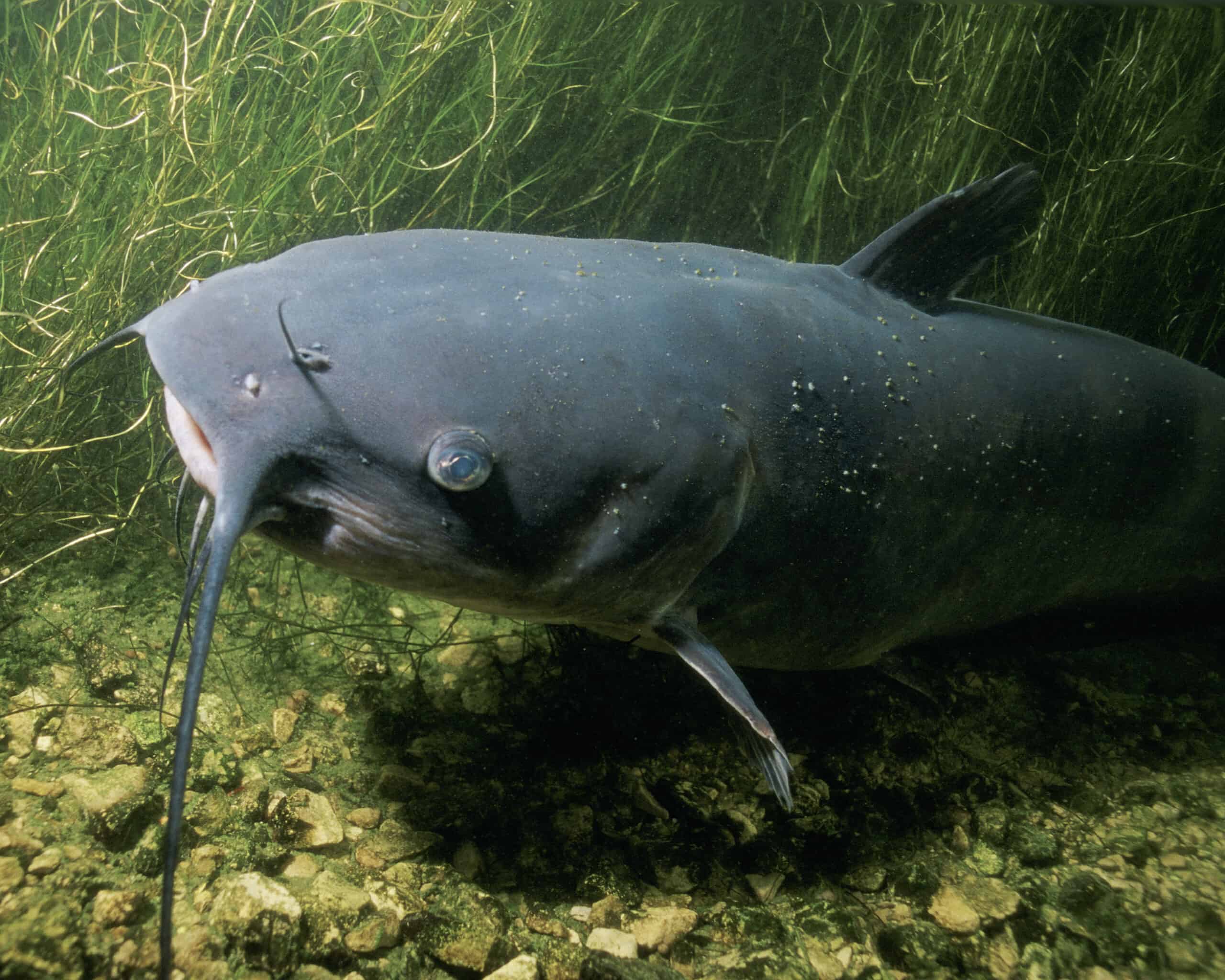
- World-Record Weight: 58 pounds, 0 ounces
- Angler: W. Whaley
- Date: July 7, 1964
- Location: Santee-Cooper Reservoir, South Carolina
The final three catfish species on this list are commonly known as the “Big Three.” This includes the channel, flathead, and blue catfish. They are known as the “Big Three,” firstly because they are the biggest three catfish species in the United States, but also because they are the three most targeted catfish by American anglers.
The channel catfish (Ictalurus punctatus) is the most numerous species of catfish in North America. Its native range includes the central United States, with widespread introductions stretching throughout the rest of the country. This catfish is present in nearly all of the 48 contiguous states.
The color of channel catfish can vary depending on their habitat. Typically they are an olive-brown color with a silvery-white belly. Some younger fish have black spots, but those spots tend to fade as the fish ages. Channel catfish also have a deeply forked tail.
Unlike bullheads, the “channel cat” often prefers clean, highly-oxygenated water. Some of the best baits for channel catfishing include baitfish, nightcrawlers, dip baits, and punch baits. You can also buy bait at the local grocery store, including chicken livers, hot dogs, and cheese.
Channel catfish are among the tastiest freshwater fish in the U.S. The fillets are sweet with a mild flavor and no off-putting fishy taste.
Channel catfish typically weigh two to four pounds, but catches of 10+ pounds happen regularly. As the 58-pound world record demonstrates, these fish can grow quite large under the right conditions.
The channel catfish is the official state fish of Kansas, Missouri, and Nebraska. It is the state commercial fish of Tennessee.
Flathead Catfish
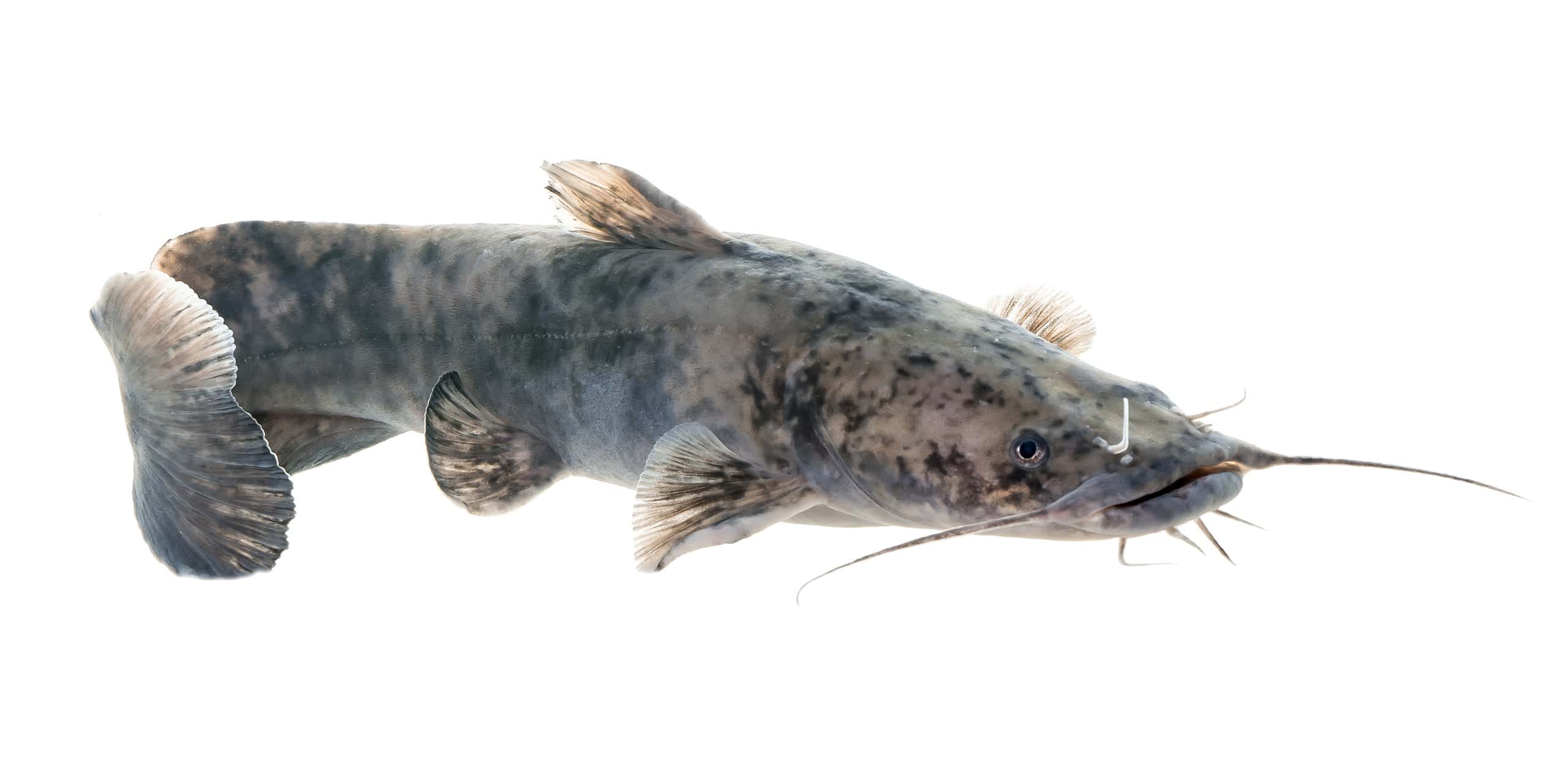
- World-Record Weight: 123 pounds, 0 ounces
- Angler: Ken Paulie
- Date: May 19, 1998
- Location: Elk City Reservoir, Kansas
The western edge of the flathead catfish’s (Pylodictis olivaris) native range runs from northern Mexico to southern Minnesota. The eastern boundary of its original range extends from Alabama northeastward to eastern Pennsylvania. It has been introduced in the Great Lakes region, states along the eastern seaboard, and in small areas as far west as Washington State and Oregon.
The flathead catfish is easily identifiable by its eponymous flat head. It is sometimes also known as a shovelhead catfish. This catfish is typically olive-green (reflected in its binomial name, olivaris) with a yellow, white, or gray underside. It is highly mottled with black or brown splotches. While no catfish would win a beauty pageant, the flathead catfish is sometimes considered the ugliest of all U.S. catfish species. However, these brutes are beautiful in the eyes of catfish anglers!
Flatheads are found most often in slow-moving or still water. They thrive in turbid conditions. Unlike other catfish that are scavengers, the flathead catfish is an apex predator. Juveniles prey on crayfish, insects, and small fish. Mature flatheads predate larger fish, frogs, turtles, birds, and almost anything else that presents itself. These catfish are typically nocturnal predators, but they are also opportunistic and will not turn down a meal during the day.
A young mature flathead can weigh 10-15 pounds, but these fish often grow to sizes of 40+ pounds and measure two to four feet long. Under the right conditions, flatheads can weigh upwards of 100 pounds.
Blue Catfish
- World-Record Weight: 143 pounds, 0 ounces
- Angler: Richard Nicholas Anderson
- Date: June 18, 2011
- Location: Kerr Lake, Virginia
The blue catfish (Ictalurus furcatus) is the largest catfish species in the United States. The “blue cat’s” native range includes the Mississippi, Missouri, Ohio, and Rio Grande river basins. While this catfish has not been spread as far as other species, the blue catfish has still been stocked in around 20 states outside its native range.
Blue catfish are sometimes confused with channel catfish. Both fish have deeply forked tails. The blue catfish, however, is typically a blueish-gray color as its name suggests. The underside is lighter, often nearly white. “Blues” can also grow far larger than channel cats, or any other U.S. catfish species.
These catfish typically exist in large river systems, although they can thrive in large impoundments, as well. A typical mature blue catfish will weigh 20 and 40 pounds and measure from two to four feet long, but these fish can grow to mammoth sizes. Fish over 100 pounds are not uncommon. The world record blue catfish weighed an astounding 143 pounds. That is the same size as an adult mountain lion!
There are legends of “blue cats” that far outweigh the current world record. Mark Twain, for example, wrote about one of these mythical giants in The Adventures of Huckleberry Finn. In the story, Huck recalled, “Well, the days went along, and the river went down between its banks again; and about the first thing we done was to bait one of the big hooks with a skinned rabbit and set it and catch a catfish that was as big as a man, being six foot two inches long, and weighed over two hundred pounds…It was as big a fish as was ever catched in the Mississippi, I reckon.”
We’re not sure if there are actually 200-pound blue catfish swimming in the mighty Mississippi, but one thing is sure…these fish grow to monstrous sizes. Avid catfish anglers salivate at the idea of hooking into one of these elusive giants.
Sponsored: Want to Retire Early? Start Here
Want retirement to come a few years earlier than you’d planned? Orare you ready to retire now, but want an extra set of eyes on your finances?
Now you can speak with up to 3 financial experts in your area for FREE. By simply clicking here you can begin to match with financial professionals who can help you build your plan to retire early. And the best part? The first conversation with them is free.
Click here to match with up to 3 financial pros who would be excited to help you make financial decisions.
Thank you for reading! Have some feedback for us?
Contact the 24/7 Wall St. editorial team.
